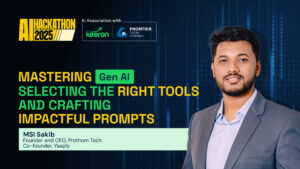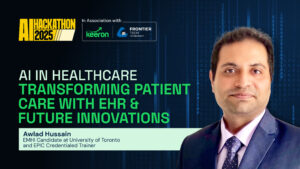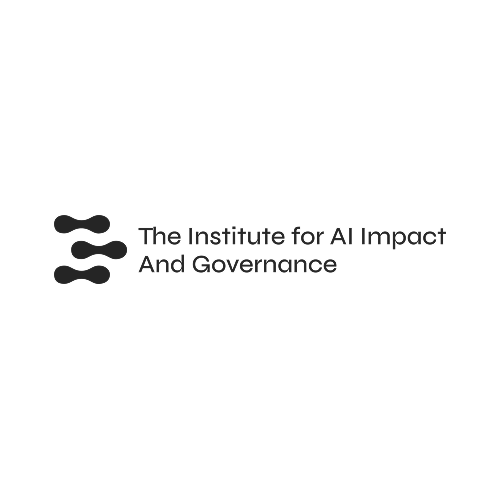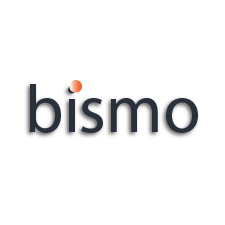
Mastering GenAI: Selecting the Right Tools and Crafting Impactful Prompts
As AI continues to reshape how we think, create, and work, one of the most critical skills today is knowing how to work with it.




4th February 2025
16th February 11:59 PM
17th - 18th February
22nd February
26th February


The second-place winner crafted a creative AI solution that effectively solved a real-world problem.

The first-place winner created an innovative AI solution that successfully tackled a real-world challenge.

The third-place winner created a practical AI solution that addressed a key real-world issue.
We aim to empower innovators to use AI tools, collaborate with mentors, and build impactful solutions.
Open to university students.
We aim to empower innovators to use AI tools, collaborate with mentors, and build impactful solutions.
A website/app/wireframe/lo-fi wireframe/product demo video.


How impactful is the idea?
How easy and simple is it to execute?
Have all major milestones been identified?
How well has the stakeholder analysis been done?
Identification & Classification (10%)
Impact & Influence Analysis (10%)
Identification of enablers, users, and resistors (10%)
How realistic is the budget?
Have risks been identified, assessed, and mitigated effectively?
How well have AI components been used? (10%)
How practical? (10%)
How useful? (5%)
How intuitive is the solution for users?
How impactful is the idea?
Are major financial and ethical risks identified, assessed, and mitigated effectively?
How novel or original is the approach?
How realistic is the solution’s implementation?







Each team must have 3 to 4 members.
Yes, teams can include members from different universities.
No, having a mentor is optional but recommended.
Teams must submit a detailed concept document.
8 Teams will each develop a prototype under the guidance of mentors and deliver a pitch.
Each team will have 5 minutes to pitch and 25 minutes for Q&A.
Deliverables include either a website, app, lo-fi wireframe, or product demo.
Yes, multiple deliverables can be submitted to showcase creativity. But not mandatory. Better to do one thing extremely well than many things at an average level.
No, any university student from any department can join. But it would be helpful to have at least one coder on the team.
Yes, total 100 Taka for the team.

As AI continues to reshape how we think, create, and work, one of the most critical skills today is knowing how to work with it.

The AI Hackathon 2025 featured a series of knowledge-sharing sessions designed to help participants move from idea to execution using practical tools and frameworks. One

The energy inside the venue was electric as AI Hackathon 2025 reached its dramatic conclusion. Designed as a globally relevant event with a strong focus

As part of the AI Hackathon 2025, a dynamic platform designed to inspire real-world problem-solving using artificial intelligence, a series of knowledge-sharing sessions were organized

Idea to Solution: How to Build an AI Product with No-Code Apps As part of the AI Hackathon 2025 knowledge-sharing series, participants had the opportunity














Bangladesh’s tech industry has great potential. The country is home to over 4,500 registered tech companies, employing more than 300,000 ICT professionals. However, the local Software as a Service (SaaS) ecosystem remains underdeveloped due to reliance on imported software, limited infrastructure, and skill gaps. Despite these challenges, there is immense potential for SaaS tailored to local needs in sectors like healthcare, agriculture, retail, and education.
Government initiatives such as the establishment of Hi-Tech Parks, tax incentives for IT companies, and investments in digital infrastructure are fostering innovation and entrepreneurship. Local startups are attempting to meet specific market needs with scalable SaaS solutions but they are also facing challenges. To fully unlock Bangladesh’s SaaS potential, barriers like high upfront digital transformation costs, cybersecurity risks, and limited cloud adoption must be addressed.
Globally, emerging technologies like AI-driven automation, quantum computing, and spatial computing are reshaping industries. AI is enabling omnichannel customer experiences and predictive analytics; quantum computing is revolutionizing cryptography and drug discovery; and spatial computing is enhancing interactions between the physical and digital worlds. These trends highlight the need for Bangladesh’s tech sector to align with global demands by upskilling talent in areas like AI/ML, IoT development, and cybersecurity to remain competitive in the evolving global market
This hackathon aims to generate actionable ideas that can do any one of these:
Bangladesh’s healthcare system faces significant challenges, particularly in rural and underserved areas. Limited healthcare access, inefficient data systems, and the growing burden of communicable and non-communicable diseases, including antibiotic resistance, strain the system.
Antibiotic resistance is a pressing global health crisis, with Bangladesh being one of the countries most affected due to the overuse and misuse of antibiotics. This issue requires innovative informatics solutions to improve monitoring, optimize prescription practices, and support public health interventions. Antibiotic resistance in Bangladesh has risen by 11% over five years, with resistance rates exceeding 80% for some commonly used antibiotics. The misuse of antibiotics is rampant, with 18% of households in Dhaka possessing antibiotics without prescriptions, contributing to antimicrobial resistance (AMR). In 2019 alone, AMR was associated with 98,800 deaths in Bangladesh, highlighting the gravity of the issue.
Moreover, The doctor-to-population ratio is only 0.8 doctors per 1,000 people, far below the World Health Organization’s (WHO) recommendation of 4.45 per 1,000.
Recognizing the potential of health informatics, the Ministry of Health and Family Welfare (MOHFW) is initiating a project to digitize patient records at upazila (sub-district) health complexes and integrate them into a centralized health information system. Despite progress with digital health tools like DHIS2 (District Health Information Software 2), challenges remain in integrating private sector data and ensuring platform interoperability.
The government has initiated surveillance programs like the National Antibiotic Resistance Survey to monitor trends and inform policy decisions. There is a strong need to improve healthcare quality, accessibility, and efficiency while addressing specific challenges like antibiotic resistance.
Reviewed and improved by:
Master of Health Informatics Candidate (Executive), University of Toronto
Master of Public Health (MPH), BRAC University
Bachelor of Medicine, Bachelor of Surgery (MBBS), Shahjalal University of Science and Technology
Post Doctoral Research Fellow, The Johns Hopkins University School of Medicine
Master of Public Health (MPH), Johns Hopkins Bloomberg School of Public Health
Master of Public Health (MPH), American International University-Bangladesh
Bachelor of Medicine, Bachelor of Surgery (MBBS), Ibrahim Medical college under University of Dhaka
Below are the references from the provided search results that are relevant to the case study:
Bangladesh needs to rapidly embrace artificial intelligence (AI) technologies across various sectors, but the country lacks comprehensive AI governance frameworks to ensure responsible development and deployment. This gap poses significant challenges related to intellectual property rights, data privacy, algorithmic bias, and ethical AI use.
Recent studies indicate that AI adoption in Bangladesh has grown by 35% in the past two years, with applications ranging from agriculture to finance. However, this rapid growth has outpaced regulatory measures, leading to concerns about data misuse and AI-related intellectual property disputes. In 2024, there were over 200 reported cases of AI-generated content infringing on copyrights, highlighting the urgent need for clear guidelines.
Bangladesh has initiated limited steps towards AI governance. However, implementation remains a challenge due to limited expertise and resources. The country’s AI readiness index score of 35.2 out of 100 underscores the need for significant improvements in policy and infrastructure.
Moreover, with only 0.2 AI researchers per million population (compared to the global average of 3.8), Bangladesh faces a critical shortage of AI expertise. This scarcity hampers the country’s ability to develop locally relevant AI solutions and governance frameworks.
Recognizing these challenges, Bangladesh needs efforts to establish a robust AI governance ecosystem. Despite progress in digital initiatives, significant hurdles remain in creating a balanced approach that fosters innovation while protecting rights and ensuring ethical AI use.
Key Challenges to Address
Example Solutions for Inspiration
– Establish an independent body to assess high-impact AI projects for ethical considerations.
– Develop a scoring system for AI applications based on transparency, fairness, and accountability.
– Create a specialized AI patent classification system.
– Implement a blockchain-based registry for AI-generated works to ensure proper attribution.
– Develop a centralized platform for managing consent and data sharing across AI applications.
– Implement privacy-preserving techniques like federated learning for sensitive data.
– Launch a national AI governance fellowship to train policymakers and regulators.
– Partner with international organizations to adapt global best practices to the local context.
– Create a collaborative body with representatives from government, industry, and civil society.
– Establish a sandbox environment for testing AI governance frameworks in real-world scenarios.
References for AI Governance Case Study
Academic and Policy Sources
Research Publications
Institutional Reports
Legal and Policy Documents
Technology and Innovation Sources
Capacity Building Resources
Bangladesh’s coastal regions face severe threats from climate change, with rising sea levels, increased cyclone intensity, and saltwater intrusion endangering millions of lives and livelihoods. Climate change impacts in Bangladesh have intensified over the past five years, with sea levels rising at an alarming rate. Salinity intrusion now affects over 50% of coastal areas, severely impacting agriculture and freshwater availability.
The frequency and intensity of cyclones have increased dramatically, with recent storms causing billions in damages and affecting millions of people. By 2050, up to 18 million people could be displaced due to climate-related disasters in coastal areas. The country’s unique geography, with 80% of its landmass in floodplains and 28% in coastal areas, exacerbates its vulnerability to climate change impacts.
The government’s Delta Plan 2100 aims for long-term climate resilience, but implementation remains challenging due to limited resources and technical capacity. There’s an urgent need for innovative solutions to enhance coastal resilience and adaptation strategies.
Key Challenges to Address
Example Solutions for Inspiration
– Use machine learning to analyze satellite imagery, ocean data, and weather patterns for accurate local climate predictions.
– Implement a blockchain-based system for transparent climate data sharing among stakeholders.
– Develop AI models to predict sea-level rise and salinity intrusion patterns.
– Create adaptive management plans for mangrove forests and coastal agriculture.
– Implement IoT sensors for real-time monitoring of water levels and salinity.
– Develop a mobile app for disseminating localized early warnings and adaptation strategies.
– Use computer vision for automated monitoring of mangrove health and coastal ecosystems.
– Develop predictive models for species migration patterns due to climate change.
– Create AI-driven recommendations for climate-resilient crops and aquaculture practices.
– Develop virtual reality simulations for training coastal communities on adaptation techniques.
References: